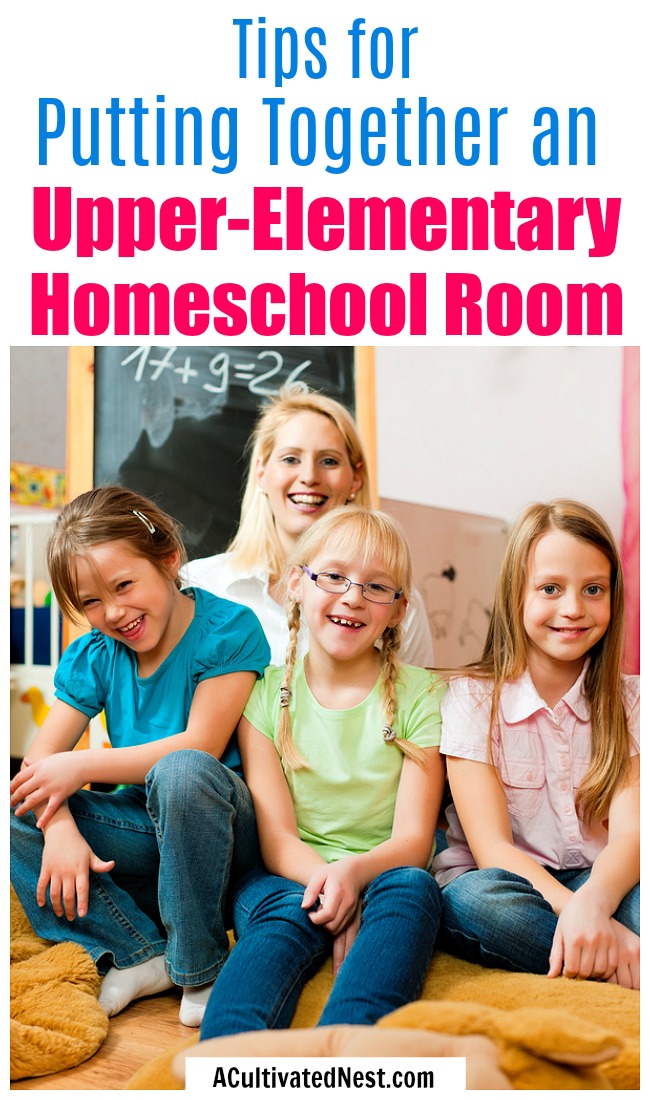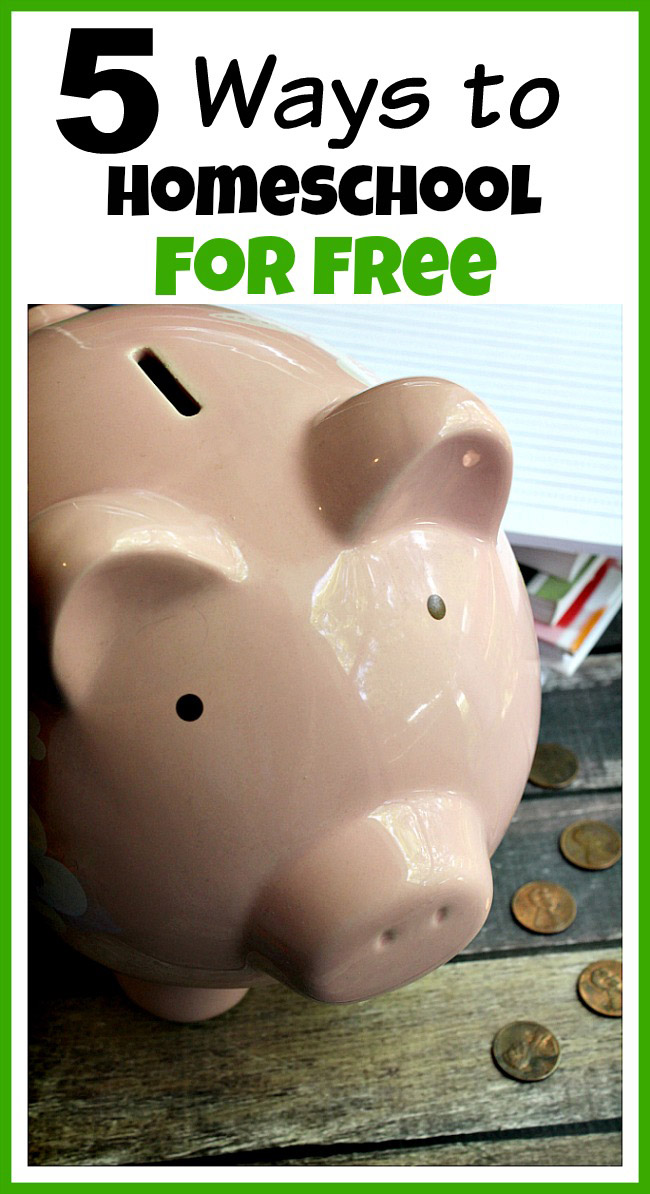Homeschool Upper-Elementry Room Tips.
If you have taken the leap to homeschooling, you are probably wondering just where to start. With school starting up and summer coming to an end, it’s time to put together your homeschool room. Having a whole room just for homeschooling is a lifesaver and means you can set your room up just like a classroom. Here are some Tips for Putting Together an Upper-Elementary Homeschool Room!

Disclosure: This post may contain affiliate links to Amazon and/or Etsy, which means that I may earn a small commission from some of the links in this post. Please see our Disclosure Page for more information.
By “upper-elementary” I mean that the room should be for kids in grades 4-6. So it should still be fun, colorful, and designed for kids, but the general feel of it should be leaning a bit more toward a middle school homeschool room.
Tips for Putting Together an Upper-Elementary Homeschool Room
1. Create cubbies, shelving, and space to organize. If you don’t already have organizational tools, now is the time to get them. Having numerous shelves, cubbies, and places to keep all your homeschool supplies is critical to staying organized.
2. Give each child their own space. With homeschooling, each child will be working at their own pace, which means different books, materials, and supplies. Give each child a place to keep his or her school separate and organized.
3. Have a central point. Even in a traditional classroom, some skills are best learned together. A central half moon table or round table offers you a place to work with your children together or individually. This central spot helps keep you and them organized.
4. Consider using centers. Because each child will learn differently and at different paces, keeping your kids focused and learning at the same time can be tough. Instead of trying to work through the chaos, consider creating centers for your children to transition to once they have completed a task, such as an arts and crafts center, file folder game center, technology center, math center, or any other center you can think of.

5. Establish a reading area. Reading is an important part of homeschooling, and having an area just for reading is crucial in helping your kids succeed. It gives you a place to send other kids while working with another, and it gives your kids a quite comfortable area to delve into the adventures of reading. If you have a Kindle Unlimited membership, then leaving a Kindle e-reader in the area can make a cozy and convenient space for free reading (an e-reader only device is preferable to a general purpose tablet, so your kids can’t get distracted).
6. Make use of your wall space. Hang helping tools on the walls of your upper-elementary homeschool room. Some great ideas to hang on the walls are interesting synonyms to common words, maps, math strategies, or tips to help your child in an area they are struggling. This is a great way for kids to quickly find a reference or trigger their memory without looking through countless books.
7. Use chalkboard or dry erase paint. One of the best things on the market today is chalkboard paint and dry erase paint. This offers you a place where you can write down what you want your kids to do for the day, where they can get creative, and a place to keep things organized. Use this paint to create a writing place for you and your kids.
8. Use hanging shoe organizers. Pens, pencils, crayons, and other supplies are needed on a daily basis. Use a hanging shoe organizer to keep your supplies available at all times. When your child needs something, they can easily find it hanging on the door.
9. Use manipulatives. Keep manipulatives in storage boxes or bins that are organized. Teach your kids to treat the manipulatives with respect and always put them away after you use them. Manipulatives are great teaching tools and should be incorporated into your upper-elementary homeschool room.

10. Embrace the technology you have. Technology is an amazing tool that you will find you need time and time again. Embrace your technology by making computers, tablets, and printers accessible at all times. Download learning apps that go with your child’s skill level and use them at transitional periods to help keep learning going and chaos down.
11. Use puzzles. Many homeschool parents forget the importance of a puzzle. Puzzles are great transitional tools. Not only are they great to use for transition, but they are good for kids of all ages. Since you’re trying to design an upper-elementary homeschool room, try to choose more advanced puzzles with less childish themes.
12. Find things your older kids enjoy. Just because your kids are in an upper-elementary homeschool curriculum doesn’t mean you can’t have fun activities for them to do. They’ll just need to be different, and less “kiddy” than the things you might include in a lower-elementary room. So use your judgement to fill your homeschool room with learning and creative activities that your older kids will enjoy.
13. Think outside the box. If you have active kids or a house full of boys, it’s important to think outside the box when creating your upper-elementary homeschool room. If you have the space, incorporate a jumping area with a mini trampoline (AKA rebounder) or exercise/stability balls. When it comes to restless kids, learning is better accomplished when there are little spurts of active breaks.
Do you have any other tips for putting together an upper-elementary homeschool room? Share your tips, suggestions, and ideas in the comments below!

You might also be interested in: 5 Ways to Homeschool for Free
